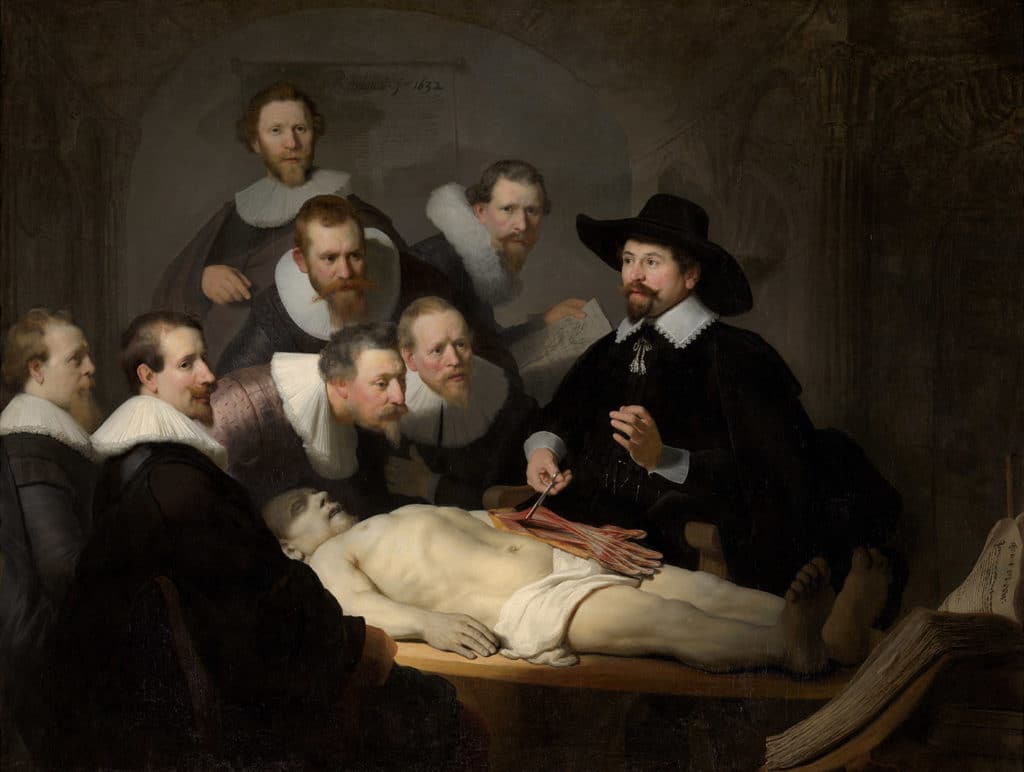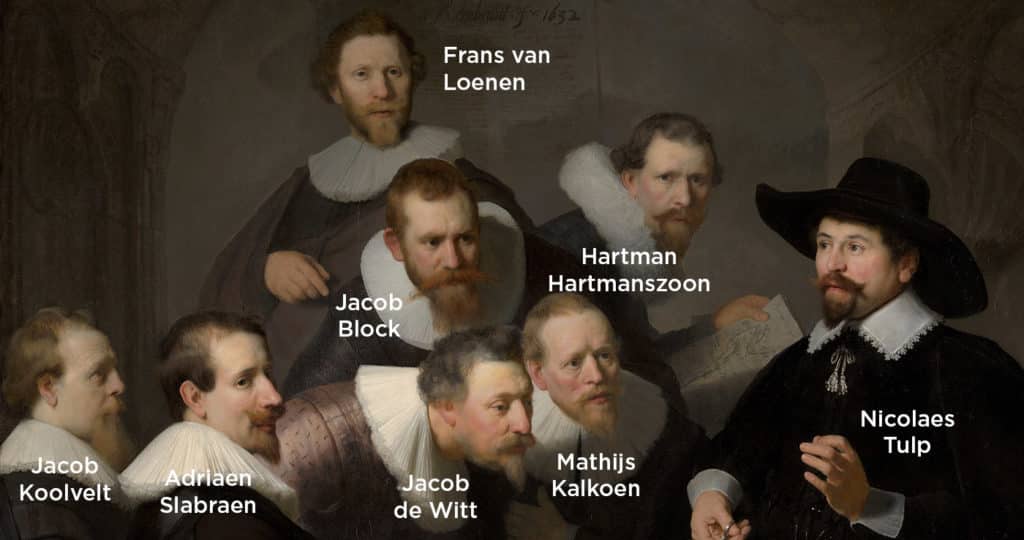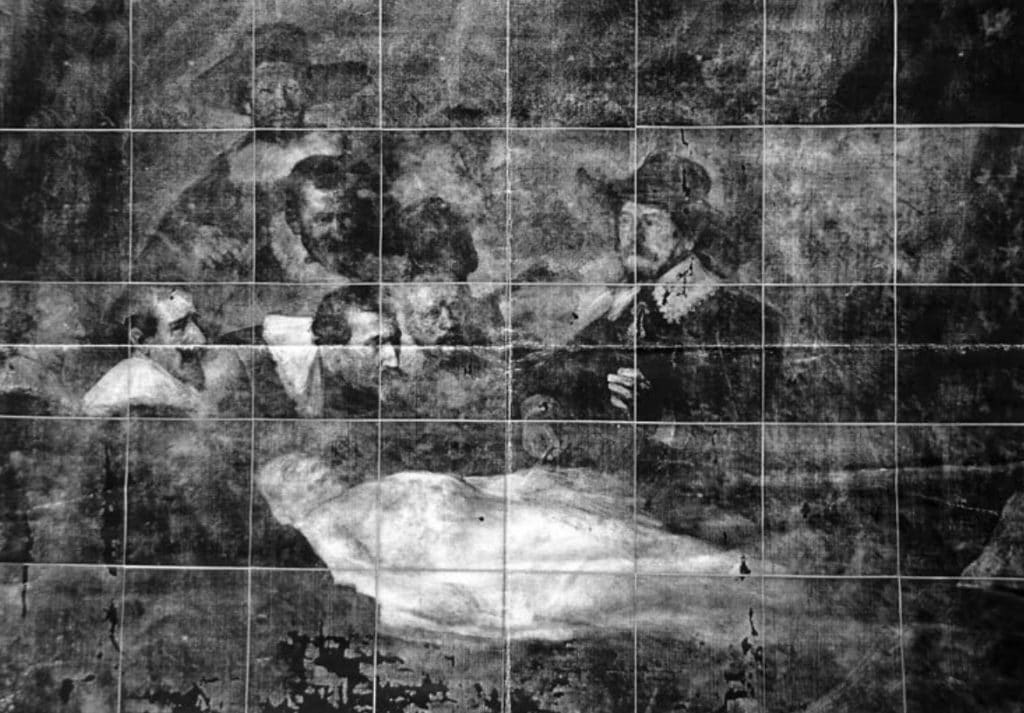Dr. Tulp’s Anatomy Lesson was Rembrandt’s first major commission. Executed when he was only 26 years old, this artwork is one of the artist’s masterpiece.
In what context was this painting created? Who are the characters depicted in it? And what lesson is Dr. Tulp giving? Let’s analyze this fascinating painting.
Summary
In what context did Rembrandt create this painting?
In the city of Amsterdam, the dissection of male corpses was allowed from 1555. This can only be performed by a surgeon appointed by the city and for the purpose of training apprentice surgeons.
The particularly influential guild of surgeons regularly commissioned group portraits in which everyone paid to be represented. It is in this context that in 1632 a new commission was entrusted to Rembrandt, then only 26 years old but already considered a rising star. For the painter it was an opportunity to change this kind of painting: instead of a static portrait, he wanted to go further and tell a story.

Who are the characters represented?
The most important character standing above the painting is Nicolaes Tulp. He is one of the key people of Amsterdam: eight times treasurer of the city, four times mayor, he is a politician who is also an anatomist and surgeon. Since 1628, he was elected Praelector of the guild of surgeons to teach surgical anatomy.
At his side are the assistants to the lesson: Frans van Loenen, Jacob Block, Hartman Hartmanszoon, Jacob de Witt and Mathijs Kalkoen.

The cadaver – who is the only character in the painting who did not pay to appear in it! – was not chosen at random. It is Aris Adriaenszoon, nicknamed Aris Kindt. He is a thug from Leiden, where he was once convicted of robbery and assault, crimes for which he had his right hand amputated at one time; at that time, legal mutilation was practiced. In Amsterdam, he tries to steal the coat of a passer-by whom he suffocates to death trying to prevent him from screaming. Arrested then judged, he was hanged on January 31, 1632.

His body was chosen for the anatomy lesson for three reasons:
- he is a man (at the time of the painting the dissection of female bodies was not yet allowed in Amsterdam),
- he’s an executed criminal
- he was a stranger to the city
X-ray analysis of the canvas showed that the right hand of the corpse was added in a second step. Initially, Rembrandt had depicted the body with great realism, representing the stump of Aris Kindt.

What does this anatomy lesson represent?
Tulp is demonstrating the bending of the finger joints. With his right hand, he is about to exert a traction on the muscle of the deceased. But it is interesting to look at his left hand with which he is showing what will happen, anticipating the effect that the muscle traction will have on the fingers. To Tulp’s right, Jacob de Witt is staring at the corpse’s hand while Mathijs Kalkoen is staring at Tulp’s left hand.

Where can we see Dr. Tulp’s Anatomy Lesson?
Dr. Tulp’s Anatomy Lesson is kept at the Mauritshuis, the Royal Cabinet of Paintings in The Hague, Netherlands. Among other masterpieces in this museum, you can also see Girl with a Pearl Earring by Vermeer.
ALSO READ: The hidden meanings of the Tower of Babel by Brueghel the Elder






People reacted to this story.
Show comments Hide commentsHi, I found that really useful, thank you so much!
Thank you 🙂
Thank you! and I wonder that article from resource.